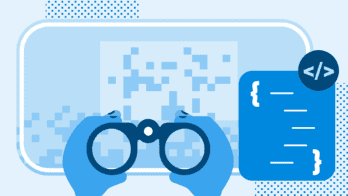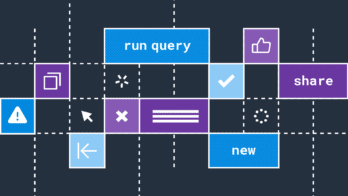Download the Director’s Guide to Observability to learn more.
Monitoring used to be so easy. Servers had names and lived down the hall, or across the street. If things weren’t working, you could turn them on and off again. Database filling up? Just throw another hard drive in there. Too many simultaneous requests? Rack another server and install a cache.
Fast forward a couple decades, and things have gotten much more complicated. Servers have long stopped being physical things that you interact with, and you’re paying fractions of a cent for more database storage than you know what to do with. A dizzying array of managed services, mobile clients, and cloud APIs power your software—how can you possibly keep track of it all? You need full-stack observability.
What is full-stack observability?
Simply put, full-stack observability is monitoring designed for modern, cloud-native architectures. It allows you to understand how your software system interacts at scale, across everything from traditional mainframes and legacy clients to modern serverless or Kubernetes-based services.
It uses a variety of telemetry sources and signals, integrates them together, and gives you end-to-end visibility across the entire software development, deployment, and runtime lifecycles.
How does it work?
Unlike traditional monitoring approaches, which silo data by signal or source, full-stack observability seamlessly blends logging, metrics, and tracing data from multiple sources. Rather than relying on discrete and disconnected infrastructure metrics, server traces, and client logs, a full-stack observability platform is capable of ingesting, alerting, and analyzing these forms of telemetry in a single tool.
In addition, full-stack observability brings together business and application telemetry into one home. Rather than separating important business questions or Service Level Objectives into different tools and workflows, full-stack observability allows you to ask and answer questions like, “Are we getting more conversions with our recent web updates?” or “Which customers are the most expensive users of our API?” These kinds of questions are difficult to answer with siloed telemetry, but full-stack observability makes them possible—without breaking your observability budget.
Why is full-stack observability important?
The demands placed on developers and operators has never been higher than it is today, where we’re all being asked to do more with less. Full-stack observability helps you navigate some of the biggest challenges software teams face today.
Enhancing real-time debugging and troubleshooting capabilities
By pulling together disparate data sources, you never have to thumb through multiple tabs to pinpoint the factors contributing to an outage or incident. A single source of truth means that everyone, from your SREs to your web developers, are able to visualize and understand not just what’s happening, but also who it’s impacting.
Improving system performance and reliability
Full-stack observability isn’t solely for firefighting; it’s also useful when performing long-term performance tuning. Being able to easily see the changes of new releases over time across your entire infrastructure, or watching A/B tests happen in real time without having to create new dashboards or alerts means you spend less time building monitoring infrastructure and more time actually monitoring.
Getting code to production faster with improved CI/CD
You’re not limited to just looking at the state of your software with full-stack observability—you can also visualize and optimize your tests and deployments. Safely make changes to your development processes and pipelines without risking disappearing tests or blocking releases. Full-stack observability brings it all together in one place!
How full-stack observability can help you succeed
Full-stack observability isn’t another tool to add to your growing collection of fix-its, it’s a strategic advantage for your business. It helps you ship faster with more confidence, and out-innovate the competition. A comprehensive view of your entire system gives everyone, from developers to product managers, the ability to make better informed decisions more quickly and with more confidence than ever before.
Proactively identifying and resolving problems before they impact users, maintaining a high level of service reliability, optimizing your cloud spend, and improving alignment between business and technical teams: these aren’t just nice-to-haves, they’re what full-stack observability is designed to enable.
The insights you gain don’t just help you build more reliable software—they help you understand how your system affects user behavior and business outcomes.
The future of observability
Over the past few years, we’ve seen great leaps in the technology landscape. Machine learning, AI, and new types of application architectures are reshaping the way we build and deliver value through software. Observability will continue to advance as well, and its future will be more intelligent, automated, and integrated than ever before.
The ability to observe, understand, and act on data from every part of a distributed system and organization will be increasingly crucial to the success of products and services. It will empower your teams to innovate faster, improve customer experience, and achieve their goals in an increasingly interconnected world. Embracing full-stack observability today sets the stage for a more resilient, agile, and successful tomorrow.









